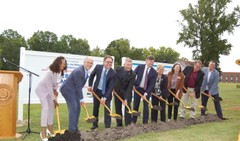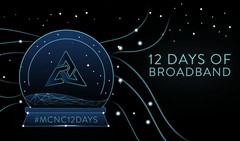R&E networks could help better identify national broadband gaps

The United States has made great strides in recent years to connect Americans to high-speed broadband. But hurdles remain, especially in sparsely populated areas where the economics of broadband are challenging. While only 2 percent of urban residents lack access, according to the FCC, more than 30 percent of rural Americans currently live in areas that lack availability of broadband, which since 2015 has been defined by the FCC as 25 Mbps down, 3 Mbps up.
The National Telecommunications and Information Administration (NTIA) requested comments on actions to improve broadband availability data, particularly in rural areas, as part of national activities directed by the Consolidated Appropriations Act of 2018.
In total, 53 individuals and organizations submitted comments, which were due on July 16, 2018.
Through this request, the NTIA sought input from a broad range of stakeholders on ways to improve the nation's ability to analyze broadband availability, with the intention of identifying gaps in broadband availability that can be used to improve policymaking and inform public investments.
In May, David J. Redl, Assistant Secretary for Communications and Information and NTIA Administrator, said the NTIA knows these gaps exist, but what isn't known is precisely which areas of the country have insufficient broadband capacity. Added Redl, "that makes it difficult to ensure that public investments in infrastructure are efficient and effective."
Merit, Michigan’s research and education (R&E) network, and the Quello Center at Michigan State University, worked with The Quilt and other R&E networks throughout the country to craft a joint comment on how to enhance indicators of broadband access.
According to Bill Dutton, former director of the Quello Center (who has vacated the role since comments were submitted to the NTIA), the comments provided on behalf of Merit and Quello offer an innovative approach to consumer sourcing of broadband availability data that builds off the FCC’s initiatives with crowdsourcing.
"If successful, this approach has the potential to be scaled nationally," Dutton explained in his blog. "The comments provide an overview of current approaches, the potential of consumer-sourced data, and an outline of their approach."
The North Carolina Department of Information Technology’s Broadband Infrastructure Office, or NCDIT, also provided comments this summer and applauded the NTIA’s initiative to derive more granular data to improve the identification and mapping of areas served and unserved by broadband.
NCDIT recommended the development of an “Availability Index” to determine access as well as timely and reasonable broadband deployment, stating that data could be obtained from annual reports released by the FCC and from the U.S. Census Bureau.
"We should not continue to use the current methodology to calculate the percentage of Americans with access to fixed advanced telecommunications capability," the official comments stated. "In the absence of subscription and infrastructure location from the Internet Service Providers, an index, considering several relevant data layers, can be used to draw a more granular and instructive map. We encourage the NTIA to partner with the FCC on developing a comprehensive tool that would provide a more accurate picture of broadband availability."
The Schools, Health & Libraries Broadband (SHLB) Coalition also provided one of the 53 official comments submitted to the NTIA this summer. Read more.
"We appreciated the thoughtful comments, and thank everyone who took the time to share their thoughts," said Redl in September during the Mobile World Congress Americas in Los Angeles. "This fall, NTIA’s broadband team will begin acquiring the tools needed to begin data collection. We are looking to partner with industry and government agencies in new ways in order to achieve these goals. We hope to create a scalable platform and a phased approach to a new national broadband map, to make the most of our resources."
NTIA will host a broadband workshop in Nevada on Jan. 11, 2019. The workshop will provide further information on this topic in addition to local broadband planning, funding and engagement with service providers, and efforts to improve digital opportunities.






















